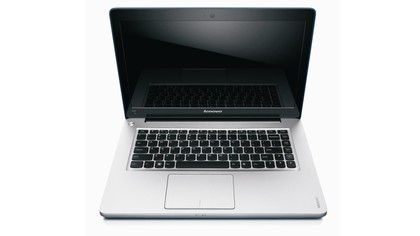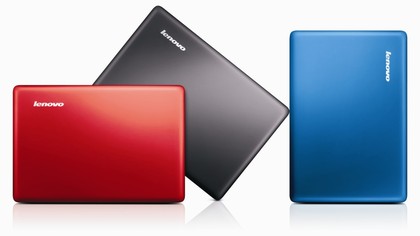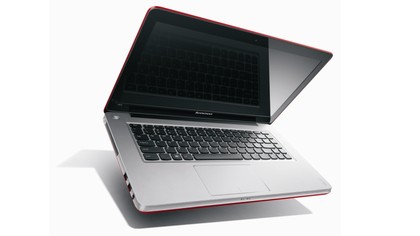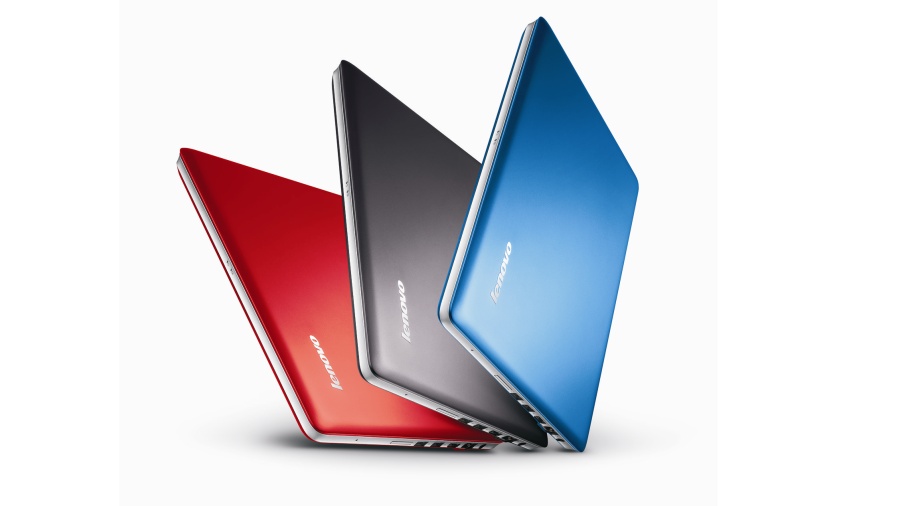Why you can trust TechRadar
Benchmarks
Cinebench: 9,076
3DMark: 5,517
Battery Eater: 181 minutes
Since the third generation Ivy Bridge Intel Core chips landed earlier this year, we've been consistently impressed by the performance increase from the Sandy Bridge platform.
And the Lenovo IdeaPad U410 is no exception to this rule.
Its raw benchmarking score for general performance is as good as we've ever seen on an Ultrabook (and remember, this was an i5 model, not an i7 one) and, although the 3D gaming benchmark result didn't quite match the Acer Aspire Timeline U M3, it was still a decent score.
After all, this isn't a gaming machine – it's an Ultrabook whose reason for being is everyday multimedia and productivity tasks.

That's not to say you can't get your game on with the U410 though; we managed to run Batman around Arkham City at an acceptable frame rate with a few of the settings toned down.
Casual gamers should, therefore, have no bother wasting a few hours killing baddies in virtual worlds.
The Lenovo IdeaPad U410 had absolutely no issue playing back HD video (even 1080p footage) from a number of file types and casual media editors shouldn't worry that the i5 chip isn't up to the task.
We edited large image files with little fuss and basic video editing should also prove to be a seamless affair.
Sticking with media, and you won't be disappointed by the sound on this small machine.

Powered by Dolby Home Theatre V4 tech, the stereo speakers were surprisingly good with nice clarity and a reassuring bass response.
The 1,366 x 768 glossy display is okay, with decent colour levels – although it is guilty of fading and struggling with darker shades if you aren't viewing from the optimum angle.
This is no way an issue exclusive to the U410 though.
A higher resolution would have been nice but 1,366 x 768 seems to be the Ultrabook standard at present, although there are one or two exceptions, such as the HP Envy 14 Spectre and the Asus Zenbook UX31, that opt for a larger pixel count.
These two Ultrabooks are both far pricier than the U410, however.
Using the Lenovo IdeaPad U410 is a pleasurable experience thanks to the nicely spaced, and naturally cushioned, AccuType isolated keyboard that features individual rounded keys.

The keys aren't backlit, like the MacBook Air's, but they are nicely positioned, with a pleasing travel and you won't have any issues with discomfort while tapping out long emails, essays or even that novel that you've been working on.
The trackpad is a solitary affair, set just left of centre, which forgoes physical buttons in favour of a couple of integrated clickers, situated at the base.
You can, of course, simply tap anywhere on its surface for a standard right-click, and multi-touch gestures, such as pinch to zoom, are supported.
However, we found that the trackpad was a tad oversensitive at times and we found ourselves regularly cursing an accidental click or an unwanted webpage zoom.
Lenovo is promising a battery life of nine hours for the IdeaPad U410, with a standby time of a staggering 117 days.
In our stress test, however, the model we had in for review only managed a disappointing 181 minutes.
Even with regular use (casual web surfing, media streaming, document editing and so on) we didn't get more than five hours.
The battery is embedded within the U410's chassis, as per the regular Ultrabook setup, so there's no option of carrying around a spare either.
